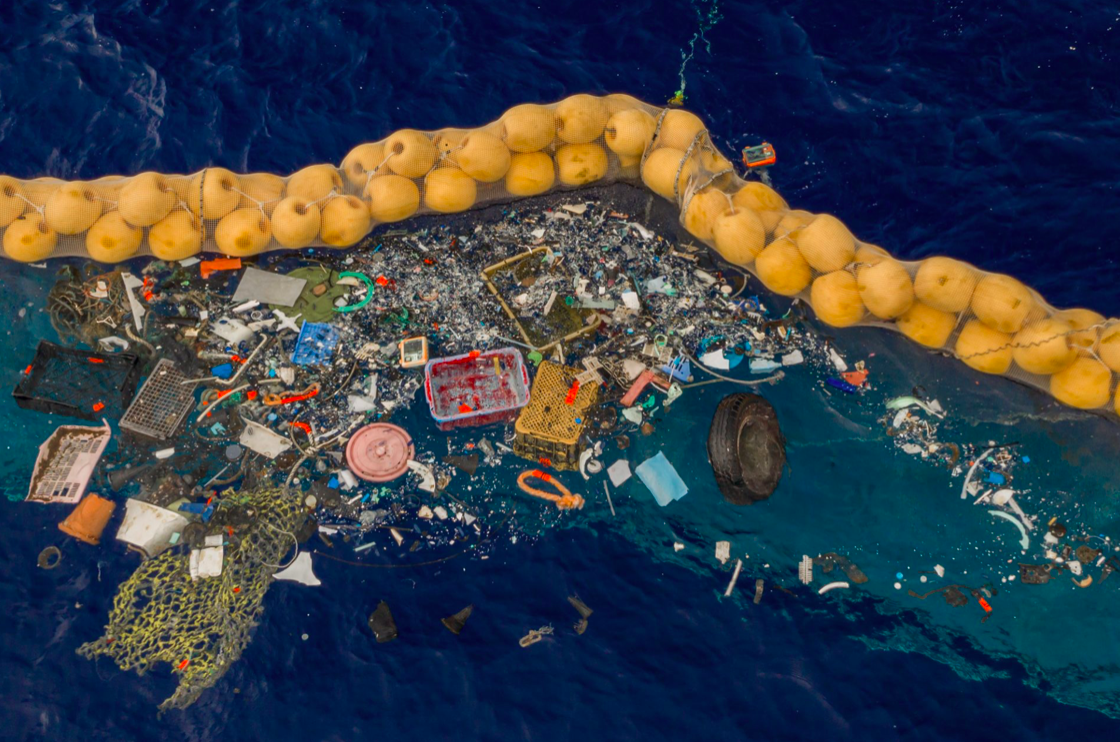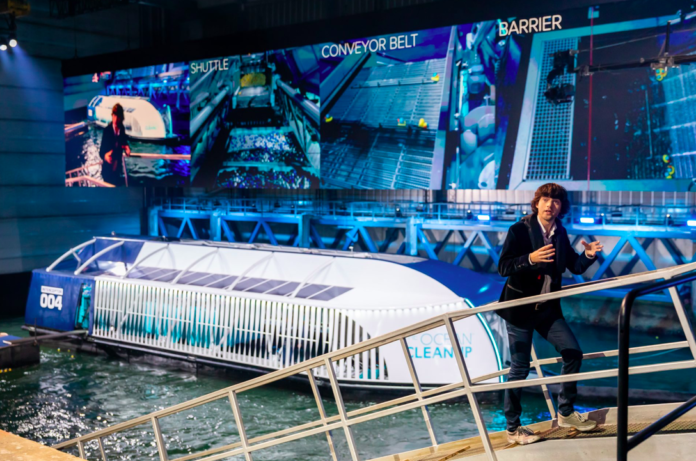The Ocean Cleanup has announced that it has developed a plastic-catching machine, the Interceptor, that will help to clean up the most polluted rivers in the world. It has successfully trialled this machine in Indonesia and Malaysia.
With this plastic clean-up project, created by Dutchman Boyan Stat, we now have a new way to collect plastic from very polluted rivers. On Saturday, the newly developed Interceptor was presented in Rotterdam.
How does the Interceptor work?
So how does the Interceptor work? There are two long arms, which the plastic in the river comes up against. These two arms shunt the plastic onto a conveyor belt, which moves the plastic into the machine’s container. The plastic catcher can collect between 50,000 and 100,000 kilos of waste every day.
Why is The Ocean Cleanup cleaning up rivers?
You might wonder why an organisation called The Ocean Cleanup would preoccupy itself with cleaning up rivers. In fact, this development is totally in line with the organisation’s goals, as almost all the plastic that enters the ocean first travels by river. About one thousand rivers in the world are responsible for 80% of the plastic that reaches the ocean.
Cleaning up these rivers is the next best thing to stopping plastic entering the environment at all, and should make the job of cleaning up the oceans a task with a finite end, rather than an endless one.

The Interceptor will come to the top thousand most polluted rivers
The Ocean Cleanup hopes to install their new device in the hundreds of most polluted rivers of the world. The machine has been working really well in Indonesia and Malaysia, and will be rolled out in the Dominican Republic and Vietnam very soon. Within the top thousand most polluting rivers of the world are enormous ones like the Nile, the Mekong, the Niger and the Yellow River, which this plastic catcher is designed for. There are also smaller rivers that heavily contribute to the amount of plastic in the ocean, but these will require a different device.
Success with ocean plastic catcher last summer
Earlier this year, at the end of the summer, The Ocean Cleanup announced their success with their ocean plastic catcher. This came after quite a lot of problems with the device: at first, it moved too slowly through the ocean, so the plastic it collected drifted away again; then one of the ends of the machine broke due to material fatigue. These problems were rectified in September. The introduction of a sea-anchor, in the form of a parachute, slowed down the plastic catcher. It is now capable of collecting microplastics measuring only a millimetre in size.

Is the Interceptor actually sustainable?
Some experts have raised concerns about the device’s impact on wildlife in the oceans, noting that small fish, crustaceans and small insects can be caught by the device just as easily as plastic can. Furthermore, only 3 percent of plastic in the ocean floats in the upper layer: the rest lies below, out of the plastic catcher’s reach.
Chris Worp, from The Ocean Cleanup, responded to these criticisms by noting that if we do nothing, no plastic at all will disappear from the ocean. Additionally, the company has focused on making the plastic catcher as sustainable as possible: it runs on solar energy, is silent, and produces no gasses. Worp says they absolutely do not want to damage the environment they’re working to save.
How will governments pay for the Interceptor?
The Ocean Cleanup hopes to have tackled the thousand most polluted rivers in the world by 2025. That’s a tall order, especially as not all governments will be on board with the idea, or have enough money to fund the programme. According to Worp, that’s where financiers will come in handy.
If you’re hoping to see the Interceptor in action in the Netherlands, you might have to wait a while. Dutch rivers are polluted, but not nearly as badly as the top thousand, which are The Ocean Cleanup’s first priority.
What do you think of this new machine? And what other ways can we deal with the plastic crisis? Let us know in the comments below!
Feature image: The Ocean Cleanup.
